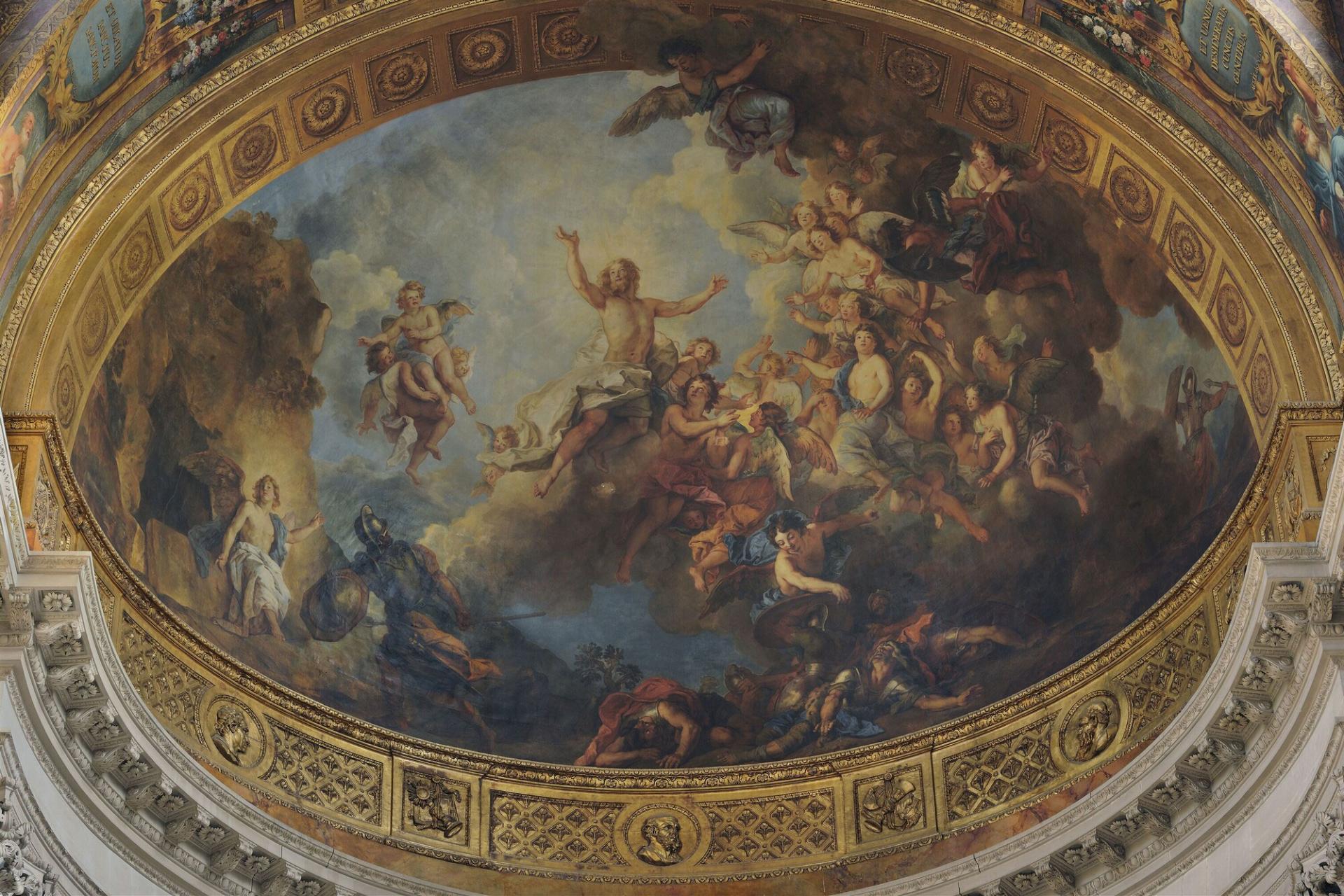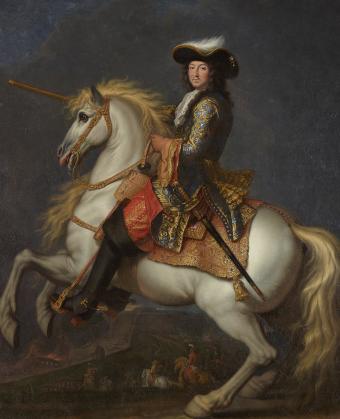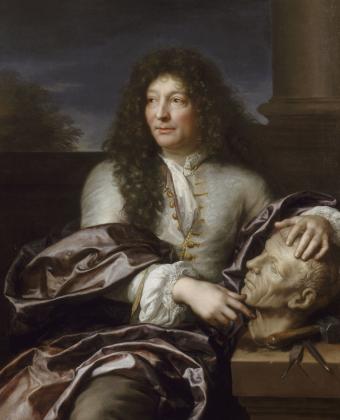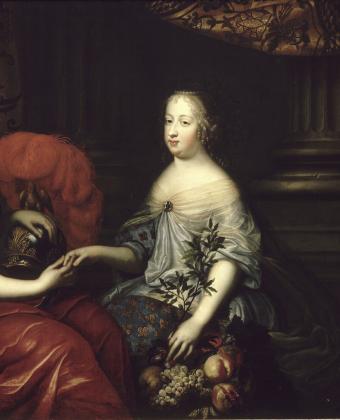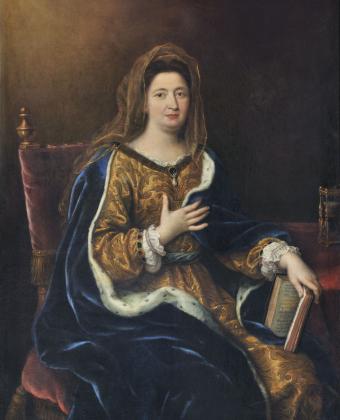Biography
Charles de La Fosse was born in Paris in 1636, into a family of goldsmiths. In around 1654, he began an apprenticeship in the studio of Charles Le Brun, who was already a favourite of the king. The artist assigned Charles de La Fosse the job of decorating the seminary of Saint-Sulpice, followed by the Hercules gallery at the Hotel Lambert. In all, he spent three years studying under Le Brun and getting to know the ins and outs of large-scale decorative commissions. He was able to pursue his studies thanks to a pension secured for him from Louis XIV by his master, with the help of Colbert.
Sometime around 1658, he set off on a trip to Italy, where he spent two years in Rome, studying Raphael and the Old Masters, followed by three years in Venice, where he studied the Venetian grand masters of the 16th century: Giorgione, Titian, Bassano, Veronese and, in Parma, Correggio. Charles de la Fosse embraced the colours and light employed in the works he studied. As a result, his colourist style, featuring chiaroscuro, broken colours that “trick the eye” and composition as a coherent “whole” marked the early 18th century.
While de La Fosse’s work found favour with the king, he also received many private commissions, including from the Church. Most of his career was spent in France, apart from a brief sojourn in England, in 1689-1690, at the invitation of Lord Montagu. Charles de La Fosse had a particularly long life, for the time, living to 80 years old and working right up to his death, in 1716.
During the Grand Siècle period, Charles de La Fosse’s innovative style was the subject of debate. In fact, it was de La Fosse’s accreditation by the Royal Academy of Painting and Sculpture that sparked the “Quarrel of the Colourists”. The stylistic liberties he took reflected the transition between the influence of Charles Le Brun and his professional ties and then friendship with Antoine Watteau.
The quarrel of the colourists
The Royal Academy of Painting and Sculpture was a place of learning but also a platform for debate. This is where, in the early 1670s, the so-called quarrel of the colourists erupted, in which two schools of painting clashed: the defenders of drawing – the use of the line and sharply defined contours – and the champions of colour – the touch, lively effects and impetuousness of the brush. On the one side were artists such as Philippe de Champaigne and Charles Le Brun, for whom drawing was an essential skill in art. On the other were the “colourists”, represented by Gabriel Blanchard and the theoretician Roger de Piles, for whom the key criterion in art appreciation lay in the appropriate use of colours. One side held that drawing appeals to the mind of the viewer and goes beyond the realm of the senses, while the other believed that the use of colour stirs the senses.
To find out more about this subject, check out the article (in French) ‘La querelle du coloris’ on Versailles’ art collections website, which also contains a selection of artworks left over from this debate.
Defender of drawing
The King Governs By Himself, by Charles Le Brun. © RMN-GP (Palace of Versailles) / © Gérard Blot 
Champion of colour
Diana and her Nymphs, by Charles de La Fosse. © Palace of Versailles, Dist. RMN / © Christophe Fouin 
The décor of Versailles and Trianon
Charles de La Fosse was one of Louis XIV’s painters and, as such, he spent a large part of his career in the king’s service. He also enjoyed the support of Charles Le Brun, the first painter to the king, and of Jules Hardouin-Mansart, superintendent of the king’s buildings, thanks to whom he got to work on the décor of the King’s State Apartment, the King’s Private Apartment and Trianon. Charles de La Fosse’s lifespan covered the entirety of Louis XIV’s reign, which is why he worked on the two biggest commissions towards the end of that reign: the Invalides and the Royal Chapel.
The ceiling of the Apollo Room
The Apollo Room is one of the most prestigious in the State Apartment. It became the king’s grand chamber in 1673 and then the throne room in 1682. Charles de La Fosse was given the honour of painting part of the room’s décor, from 1673 to 1679. In particular, he was responsible for the central part of the ceiling, depicting Apollo’s Chariot. The myth of the Sun King is represented in the guise of the god Apollo throughout the State Apartment, and nowhere more magnificently than in this central composition by Charles de La Fosse. The triumphant chariot is guided by the god, who glows with light and is surrounded by the Four Seasons. Allegories of magnificence and magnanimity are depicted at the foot of the chariot, representing the king’s greatness.
Following his creation of this extravagant artwork, Charles de La Fosse became known as “the master of colour” of his time.
Apollo’s Chariot, by Charles de La Fosse. © Palace of Versailles, Dist. RMN / © Christophe Fouin 
Estate of Trianon
At the Grand Trianon, Charles de La Fosse created part of the décor for the Couchant Room, now known as the Malachite Room: Diana and her Nymphs, Clytie Transformed into a Sunflower and Apollo and Thetis.
Clytie Transformed into a Sunflower, by Charles de La Fosse. © Palace of Versailles, Dist. RMN / © Jean-Marc Manaï 
the chapel royal
The Royal Chapel of the Palace of Versailles was consecrated on 5 April 1710, eleven years after work began on it at the behest of Louis XIV. Up to the end of the Ancien Régime it served as the location for the religious rituals of the French Court: ceremonies of the Order of the Holy Spirit, Te Deum in thanksgiving for military victories, baptisms and royal marriages. The first royal marriage to be celebrated in the Royal Chapel at Versailles was that of the Dauphin Louis to Marie-Antoinette, on 16 May 1770.
Charles de La Fosse took on the task of painting the apse in 1708, which he finished two years later. The work depicts a triumphant Christ rising to the heavens, accompanied, on the right-hand side, by a host of angels. It is also a portrayal of the battle between the forces of good and evil: the soldiers at the bottom of the composition are painted in muted colours, while the angels rising to the heavens are illuminated by Christ’s halo.
The Resurrection of Christ, by Charles de La Fosse. © Palace of Versailles, Dist. RMN / © Jean-Marc Manaï 